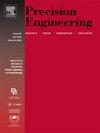通过光散射和机器学习检测粉末床熔合中的微尺度表面缺陷-检测原理的验证
IF 3.7
2区 工程技术
Q2 ENGINEERING, MANUFACTURING
Precision Engineering-Journal of the International Societies for Precision Engineering and Nanotechnology
Pub Date : 2025-04-11
DOI:10.1016/j.precisioneng.2025.04.010
引用次数: 0
摘要
激光束粉末床熔融(PBF-LB)快速成型零件的微观表面缺陷,如起球、溅射和表面气孔,会大大降低零件质量,但目前的实时测量和监控方法很难检测到这些缺陷。本文介绍了一种新颖、快速、经济高效的方法,利用光散射结合机器学习 (ML) 算法来检测 PBF-LB 中的微观表面缺陷。在所提出的方法中,激光束照射被测表面,捕捉并分析散射光来检测表面缺陷。散射模式与照明表面和设置配置相关联,用于训练无监督 ML 算法,包括自动编码器和异常检测模型,将表面分为均匀、无任何瑕疵或不均匀、有瑕疵两种。通过生成式对抗网络(GAN)生成的合成表面模拟散射模式对 ML 模型进行了训练,并在实验数据集上进行了验证。无监督模型的使用消除了数据标记的需要,而模拟和合成数据的使用则减少了实际实验和数据收集所需的时间。实验验证表明,训练有素的最有效 ML 模型的分类准确率超过 97%,凸显了该技术在检测微观表面瑕疵方面的潜力。本文展示了我们的方法在 PBF-LB 表面检测此类缺陷的能力,这是一种原位工艺。尽管如此,随着进一步的发展,这种方法仍有可能通过将照明光源集成到商用 PBF-LB 机器中并捕获散射光信息,在制造过程中进行实时质量监控,从而成为机上实时缺陷检测方法。本文章由计算机程序翻译,如有差异,请以英文原文为准。
Detecting microscale surface imperfections in powder bed fusion through light scattering and machine learning – validation of inspection principles
Microscale surface imperfections in laser beam powder bed fusion (PBF-LB) additively manufactured parts, such as balling, spattering, and surface pores, can substantially reduce component quality but are difficult to detect with current real-time measurement and monitoring methods. This paper introduces a novel, rapid, and cost-effective method for detecting microscale surface imperfections in PBF-LB, utilising light scattering combined with machine learning (ML) algorithms. In the proposed method, a laser beam illuminates the measured surface, and the scattered light is captured and analysed to detect surface imperfections. The scattering patterns, which are associated with the illuminated surface and the configuration of the setup, are used to train unsupervised ML algorithms, including autoencoders and anomaly detection models, to classify surfaces as either uniform, without any imperfections or non-uniform, with imperfections. The ML models were trained on simulated scattering patterns of synthetic surfaces generated by a generative adversarial network (GAN) and validated on experimental datasets. The use of unsupervised models eliminates the need for data labelling, whilst the use of simulated and synthetically generated data reduces the time required for actual experiments and data collection. Experimental validation demonstrates that the most effective trained ML model achieved a classification accuracy of over 97 %, highlighting the potential of this technique for detecting microscale surface imperfections. This paper demonstrates the capability of our method to detect such imperfections on PBF-LB surfaces as an ex-situ process. Nonetheless, with further development, this approach has the potential to be adapted as on-machine and real-time defect detection method, by integrating the illumination source into a commercial PBF-LB machine and capturing scattered light information for real-time quality monitoring during the manufacturing process.
求助全文
通过发布文献求助,成功后即可免费获取论文全文。
去求助
来源期刊
CiteScore
7.40
自引率
5.60%
发文量
177
审稿时长
46 days
期刊介绍:
Precision Engineering - Journal of the International Societies for Precision Engineering and Nanotechnology is devoted to the multidisciplinary study and practice of high accuracy engineering, metrology, and manufacturing. The journal takes an integrated approach to all subjects related to research, design, manufacture, performance validation, and application of high precision machines, instruments, and components, including fundamental and applied research and development in manufacturing processes, fabrication technology, and advanced measurement science. The scope includes precision-engineered systems and supporting metrology over the full range of length scales, from atom-based nanotechnology and advanced lithographic technology to large-scale systems, including optical and radio telescopes and macrometrology.

 求助内容:
求助内容: 应助结果提醒方式:
应助结果提醒方式:


